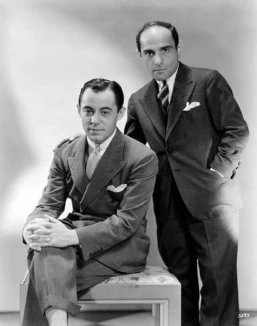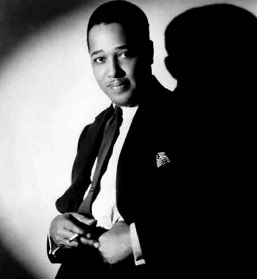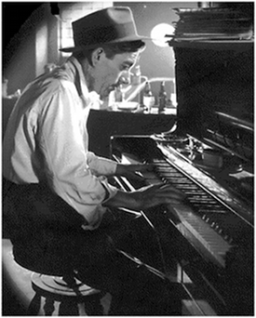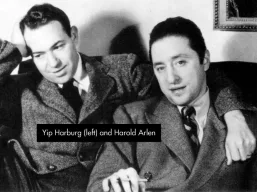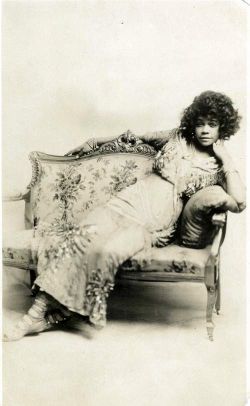Long Black Veil
_____________________
Long Black Veil (m. Marijohn Wilkin, w. Danny Dill) was first, and most notably, recorded by Lefty Frizzell on 3 March 1959. The Frizzell recording was released on the 45 rpm single Columbia Records 4-41384, b/w “Knock Again, True Love” (Wayne Walker), on 20 April 1959. Despite the lack of promotion by Columbia, it became a #6 country hit single.
.
From Wikipedia:
A saga song, “Long Black Veil” is told from the point of view of an executed man falsely accused of murder. He refuses to provide an alibi, since on the night of the murder he was having an affair with his best friend’s wife, and would rather die and take their secret to his grave than admit the truth. The chorus describes the woman’s mourning visits to his gravesite, wearing a long black veil and enduring a wailing wind.
 The best article I’ve found on the song’s creation, and the recording of the song by Lefty Frizzell almost immediately after the writing was completed, is Stop Cutting Hits: The Story of Lefty Frizzell’s “The Long Black Veil“ by Brady Vercher, as published on 12 March 2008 at the popular country music blog The 9513. (As of 26 Jan 2020, the link to the article goes to an archive page at the Internet Archive Wayback Machine, due to the 9513 site being found to be defunct on that date.)
The best article I’ve found on the song’s creation, and the recording of the song by Lefty Frizzell almost immediately after the writing was completed, is Stop Cutting Hits: The Story of Lefty Frizzell’s “The Long Black Veil“ by Brady Vercher, as published on 12 March 2008 at the popular country music blog The 9513. (As of 26 Jan 2020, the link to the article goes to an archive page at the Internet Archive Wayback Machine, due to the 9513 site being found to be defunct on that date.)
Vercher’s article describes the genesis of the song in the words of lyricist Danny Dill:
Danny Dill had worked on the song over the course of a few months before the pieces finally fell into place. He pulled the different elements from a few incidents, as he later recounted, “There’s three incidents I’ve read about in my life that really please me. There was a Catholic priest killed in New Jersey many years ago under a town hall light, and there was no less than 50 witnesses. They never found a motive. They never found the man. Until this day, it’s an unsolved murder. That always intrigued me, so that’s ‘under the town hall light.’ Then the Rudolph Valentino story’s always impressed me–about the woman that always used to visit his grave. She always wore a long black veil–now there’s the title for the song. And the third component was Red Foley’s ‘God Walks These Hills With Me.’ I always thought that was a great song, so I got that in there, too. I just scrambled it all up, and that’s what came out.” [Read more here.]
The article then describes how Dill took the song to Marijohn Wilkin on the day he completed the lyrics, and how the music came to her quickly and easily, just flowing out. She then “pitched it to Lefty Frizzell and Don Law later that same afternoon.” Frizzell evidently wanted to record it right away. In the absence of a demo or lead sheets, Wilkin was hired to play the piano, and Don Law together with a few studio players worked out a sparse arrangement.
________________________
Lefty Frizzell – 1959
.
.
For unknown reasons, in his 1961 recording Burl Ives chose to modify some of the lines of the original lyric. For example, he changed the perfect lines
But sometimes at night when the cold wind moans
In a long black veil she cries o’er my bones
to
Sometimes at night when the cold winds blow
She stands by my grave and cries often low
There are other unnecessary and unhelpful changes, but this one may have had an effect on later cover versions. For unknown reasons, many artists covering the song seem to have preferred the winds to blow rather than moan. Which means that if they’ve cared about rhyming they’ve had to either alter the next line (as Ives did) or use an off-rhyme such as “wind blows” / “my bones,” which some do. It’s not clear why Ives would want to make major alterations to these two original lines particularly, but I suspect an aversion to using the poetic contraction “o’er” may have played a part. It wouldn’t have been difficult to change “o’er” to “over” and adjust the timing of the previous words accordingly, so that the accent that falls on “cries” in the original now falls on the “o-” of “over.”
In his 1962 recording, Johnny Rivers drags out the ubiquitous cliché “all night long” and places it, for reasons obscure, opposite “cold wind moans.”
But sometimes at night when the cold wind moans
In a long black veil she cries all night long
The Rivers version also replaces the phrase “The scaffold’s high,” of the original lyric, with “The sky goes high,” which is probably an example of a mondegreen. The phrase “The sky goes high” does have a notable precedent in American poetry (see the first stanza of Carl Sandburg’s “The Fireborn Are at Home in Fire“).
As Ives had done in 1962, Joni Mitchell rather loosely paraphrases some of the original lines when performing the song with Johnny Cash on his TV show in 1969 (see below). Not all of her changes are arbitrary. Her wind doesn’t moan, or blow. It calls. But she introduces alliteration and an internal near rhyme, if it can be called that, into the first of the two lines cited above
But sometimes at night when the cold wind calls
and, while relocating the word “moans,” adds an internal rhyme to the second line
She comes to my grave and she moans over my bones.
The fear of singing the word “o’er” causes people to do funny things. I didn’t want to believe this, but after seeing “o’er” expunged o’er and o’er again in recordings of the song, that’s the conclusion I’ve come to.
Burl Ives — from The Versatile Burl Ives!, 1961
.
Johnny Rivers — 1962
.
Jerry Garcia — live, 2 February 1963, at Top of the Tangent, Palo Alto, CA
In the introduction, Garcia insists that the song is “pretty” despite being only a modern country song:
It’s not even a folk song…or anything. It’s just a song. It’s…Somebody wrote it, and..and it’s on records and…with electric guitars and everything.
At this juncture in his career he doesn’t quite seem to believe that one could actually sit down and write a song which sounded like a traditional. Hadn’t heard of Bob Dylan yet, I guess. But at least Garcia is aware that it’s a recent composition. In an undated live audio clip, Mike Nesmith introduces the song as an “old traditional tune I learned sitting knees-to-knees with a guitar player.”
.
Joan Baez — from the album In Concert Part 2, (US) Vanguard VSD-2123, recorded during her April-May 1963 U.S. concert tour; album released in November 1963
.
Bobby Bare released a recording of the song in 1964. The following recording is undated by the provider. The picture used is certainly from a later date.
.
Joan Baez — from the album Live at Newport, released in 1996. The disc includes performances from 1963, 1964 and 1965 at the Newport Folk Festival (Newport, Rhode Island) but I’ve yet to find any listing of what year the individual songs were performed.
.
Johnny Cash — Cash recorded the song for his 1965 album Orange Blossom Special, and recorded multiple versions thereafter, but it was most notably included in his two 13th of January 1968 shows at Folsom State Prison in California.
from the 1965 album Orange Blossom Special
.
Live at Folsom Prison – from the first of two shows 13 January 1968
.
Johnny Cash & Joni Mitchell — from Season 1, Episode 6, according to IMDb, of The Johnny Cash Show, original airdate: 19 July 1969
Of The Johnny Cash Show, Wikipedia says,
Cash had been approached by ABC to host a television show after the major success of his two live prison albums, At Folsom Prison and At San Quentin.[2] The show started with an hour-long tryout offered by ABC as “a summer replacement for their Saturday night variety extravaganza The Hollywood Palace.”[1] While Cash had a large degree of freedom, he “had to accept some compromises by hosting showbiz royalty like Bob Hope, George Gobel, Kirk Douglas, Burl Ives, Peggy Lee and Lorne Greene. They gave the show gravitas that satisfied both advertisers and the network”.[1]
The show was recorded at Nashville’s Ryman Auditorium, then home of the Grand Ole Opry.[1] The show was conceived, by Bill Carruthers, who also served as executive producer, and director for the first season. Stan Jacobson was also a producer on the show. Myles Harmon was the program executive for ABC Television. The first show featured Joni Mitchell, Cajun fiddler Doug Kershaw, Fannie Flagg as a comic, and Bob Dylan.
.
John Anderson featuring guest Merle Haggard — from Anderson’s 1983 album Wild & Blue
.
Johnny Cash and Kris Kristofferson — performed live in 1993 at the Olympia Theatre in Dublin, Ireland, for an Irish television production
.
Jamey Johnson with Merle Haggard and Kris Kristofferson — Ohio State Fair, 31 July 2012
The video provider says,
Jamey Johnson was invited by the Hag to come up on stage and sing a song during the Merle Haggard, Kris Kristofferson concert at the Ohio State Fair on July 31, 2012.














